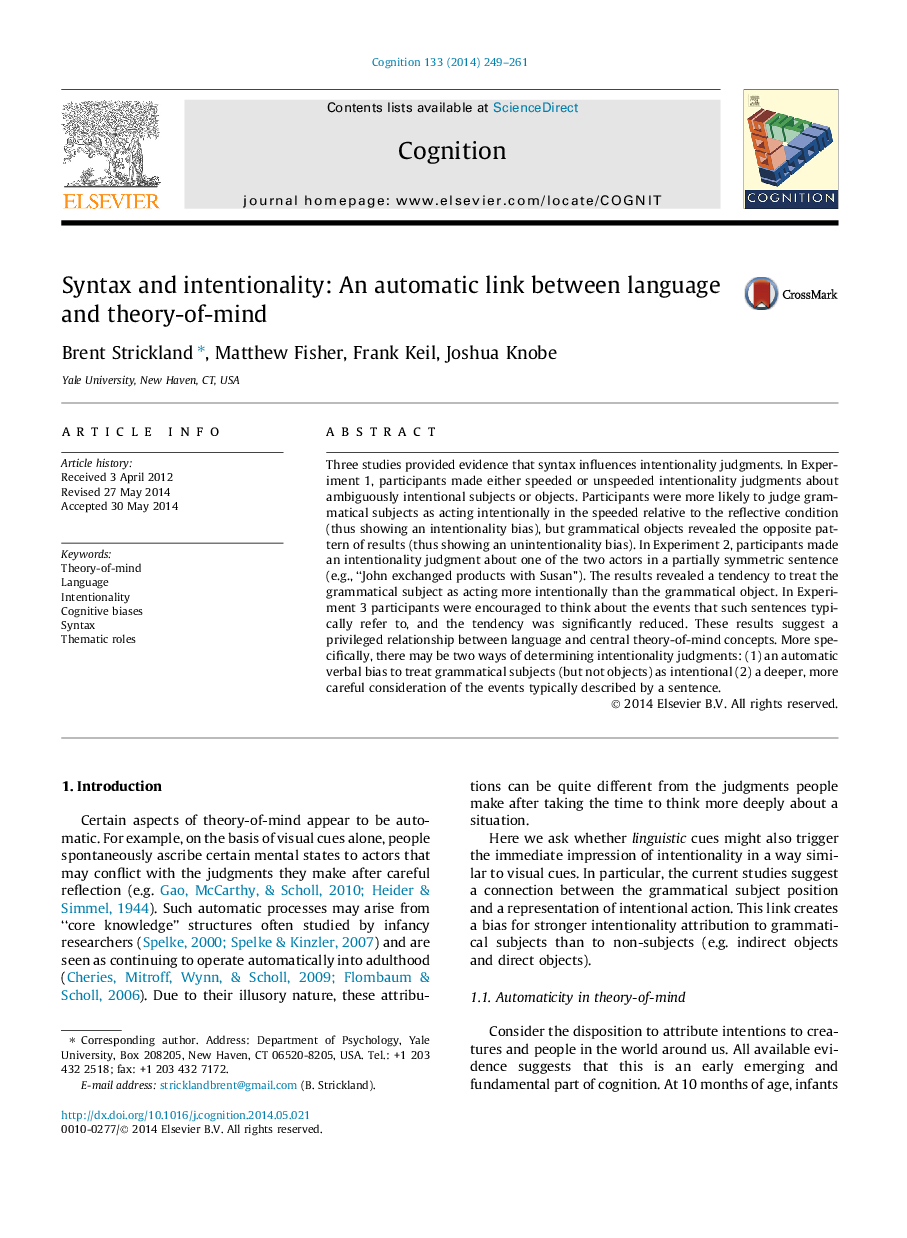| Article ID | Journal | Published Year | Pages | File Type |
|---|---|---|---|---|
| 10457737 | Cognition | 2014 | 13 Pages |
Abstract
Three studies provided evidence that syntax influences intentionality judgments. In Experiment 1, participants made either speeded or unspeeded intentionality judgments about ambiguously intentional subjects or objects. Participants were more likely to judge grammatical subjects as acting intentionally in the speeded relative to the reflective condition (thus showing an intentionality bias), but grammatical objects revealed the opposite pattern of results (thus showing an unintentionality bias). In Experiment 2, participants made an intentionality judgment about one of the two actors in a partially symmetric sentence (e.g., “John exchanged products with Susan”). The results revealed a tendency to treat the grammatical subject as acting more intentionally than the grammatical object. In Experiment 3 participants were encouraged to think about the events that such sentences typically refer to, and the tendency was significantly reduced. These results suggest a privileged relationship between language and central theory-of-mind concepts. More specifically, there may be two ways of determining intentionality judgments: (1) an automatic verbal bias to treat grammatical subjects (but not objects) as intentional (2) a deeper, more careful consideration of the events typically described by a sentence.
Related Topics
Life Sciences
Neuroscience
Cognitive Neuroscience
Authors
Brent Strickland, Matthew Fisher, Frank Keil, Joshua Knobe,
